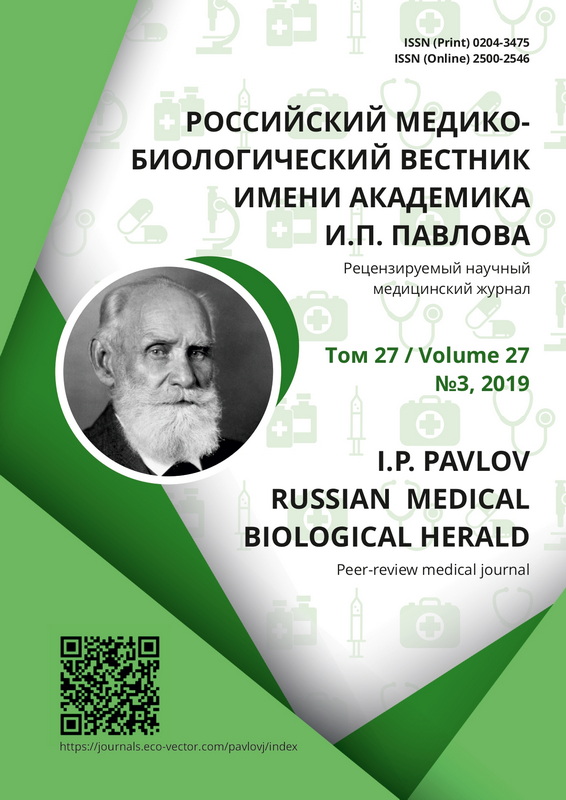梁赞州固定源排放的优先致的空气癌物的比较特性
- 作者: Dementyev A.A.1, Lyapkalo A.A.1, Tsurgan A.M.1, Bulychova G.N.1, Korshunova E.P.1
-
隶属关系:
- Ryazan State Medial University
- 期: 卷 27, 编号 3 (2019)
- 页面: 353-359
- 栏目: Original study
- ##submission.dateSubmitted##: 06.10.2019
- ##submission.datePublished##: 08.10.2019
- URL: https://journals.eco-vector.com/pavlovj/article/view/16344
- DOI: https://doi.org/10.23888/PAVLOVJ2019273353-359
- ID: 16344
如何引用文章
详细
目的:2009年和2016年梁赞州固定源致癌物质排放的动态评估。
材料与方法:为了做好分析,采用了关于从固定污染源进入大气的污染物数量的官方统计数据。优先级的确定是通过计算减少致癌物质的释放,考虑到致癌性力量的斜坡因素通过吸气路径。致癌物质释放的动态是由生长速率来估计。
结果:本研究表明,优先级的致癌物进入大气中梁赞州的市政单位从固定源被列为:铬(Cr)(VI),碳(烟灰),苯,汽油(石油)和甲醛。从2009年到2016年,记录了减少39.4%的总减少释放致癌物质,尤其是苯、烟灰和甲醛。这导致了其结构的显著变化,Cr (VI)的比重显著增加(高达55.7%,1.5倍),并苯的比例下降了近两倍(至23.3%)。 这些年来,梁赞州当量的致癌物总量的90%以上是由梁赞市和斯科平市、梁赞区和斯科平区的固定源形成的。
结论:大多数梁赞州市政单位的特点是致癌物释放总量的减少,除了亚历山大·涅夫斯基,米洛斯拉夫斯基,普龙斯基,扎哈罗夫斯基和希洛夫斯基地区,相反,观察到了致癌物释放总量增加。在梁赞市,在烟灰和苯释放量分别显著减少81.7和69.4%的背景下,大气中甲醛释放量增加了37.4%。
全文:
大气是最重要的环境因素之一。同时,工业、热力工程及交通对空气的影响最大[1, 3, 4]。根据联邦社会和卫生监测信息基金会的资料,在该国2004-2008年 主要的空气污染物是二氧化氮,悬浮固体,二氧化碳,二氧化硫以及化学致癌物,例如甲醛,铅及其无机化合物,苯并(a)芘,化合物Cr(VI)和苯酚[2]。收到这些物质的影响的人数大约有五千万人[5],因此,评估大气污染的真正致癌危险必要考虑其中存在的化合物成分以及它们共同作用的可能性。最大的致癌危险是生活在工业企业致癌物质影响区的一部分人口[6]。根据俄罗斯联邦消费者权益及公民平安保护监督局的资料,有超过320万人居住在俄罗斯工业企业的卫生保护区内,占俄罗斯总人口的2%以上。我们有资料居住在紧邻用化学致癌物质污染大气的企业附近的人们的肿瘤学发病率可能会增加 [2, 5]。
这样,考虑到致癌潜力,对空气中有毒物质排放物的结构及其动力学进行比较的评估是研究确保环境安全措施的一项重要任务。
目的是评估梁赞州各地区优先致癌物释放的动态。
材料与方法
为了实现此目标,完成:
- 汇编了梁赞州各市级地区中污染空气的优先化学致癌物清单;
- 对从固定污染源进入梁赞州各市级地区大气的优先化学致癌物排放结构的变化进行了比较评估;
- 根据进入大气的优先化学致癌物的排放动态,对梁赞州区域进行比较评估和排列。
致癌物质排放数据来源于联邦国家统计局2009年和2016年的《大气大气保护、环境保护费用和生态支付》[7.8]。致癌物的优先级是通过计算排放当量量确定的(化学致癌物排放到大气中的产物,通过SFi—吸入途径进入大气时致癌物倾斜的因素),然后根据它们的等级[9]确定的。从致癌物清单中当量的物质包括优先贡献率,其总贡献率占致癌物排放当量总量的97%。统计处理是由χ2和相关分析方法。
结果和讨论
研究表明,2016年梁赞州大气中固定源的化学致癌物按照总排放当量的总排放量的降序将污染物分类:Cr (VI),碳(烟炱),苯,汽油(石油)和甲醛(表1)。
表1优先致癌物进入梁赞地区市政区的大气,并排放固定源
物质 | Mi, 吨 | SFi | Мi× SFi, 常规吨 | 排放当量的 |
Cr (VI) | 0.413 | 42 | 17.346 | 58.4 |
烟炱 | 377.14 | 0.0155 | 5.84567 | 19.7 |
苯 | 146.993 | 0.027 | 3.968811 | 13.4 |
汽油(石油) | 33.652 | 0.035 | 1.17782 | 4.0 |
甲醛 | 10.467 | 0.046 | 0.481482 | 1.6 |
一共 | 97.1 | |||
注:SFi—吸入途径进入大气时致癌物倾斜的因素;Mi-排放(污染物释放到大气中);Мi×SFi – 排放当量(排放量考虑了致癌作用的表现度)
2009年,苯是梁赞州大气中致癌物质释放总量当量的第一大因素,占44.2%(图1)。Cr(VI)在结构中超过三分之一,位居第二,然后烟炱,汽油和甲醛的贡献率降序。
俄罗斯历史的十七年时期,伴随着生产力的显著变化导致了从梁赞州固定源进入大气的致癌物释放当量的结构发生了重大变化。与2009年相比,2016年Cr(VI)对当量的致癌物质的排放量增加了1.5倍,达到55.7%,使上述污染物在本地区检测到的致癌物中位居首位。此外,在排放物结构中,苯的份额几乎减少了两倍,而汽油的比重却增加了,而烟炱和甲醛的份额却没有本质的变化。
表2列出了梁赞州及其各个市级地区的主要致癌物排放动态。研究表明,在过去的8年中,向梁赞州大气中喷出的致癌物总量减少了39.4%,在2016年达到了16.9常规吨。同时,空气中几乎所有优先致癌物的摄入量均显著下降,尤其是苯(下降了68.8%),烟炱和甲醛(下降了47.6和43.0%)。
图1。总当量致癌物质排放当量的结构
2009年和2016年梁赞的固定源是致使进入梁赞州大气的致癌物喷出总当量的主要贡献。这些致癌物分别占排放量的74.7%和61.3%,尽管在此期间,省中心空气中致癌物的释放量减少了50.3%,2016年达到10.4常规吨。减少的主要原因是烟炱和苯排放射减少(分别减少了81.7和69.4%)。同时,大气中甲醛的流到增加了37.4%,2016年减少的排放量为0.24常规吨。
研究发现,就致癌物向大气中的总当量的团结的释放量而言,斯科平斯基区排名第二。尽管在本报告所述期间结束时,其规模下降了19.9%,达到1.57常规吨。排放量的减少主要是由于烟炱和苯向大气中的释放显着减少(分别减少了97.9%和99.7%),以及完全停止了大气中甲醛的摄入。
在2009年至2016年之间 斯科平市向大气排放的致癌物当量的总减少了26.6%,达到0.94常规吨,占整个梁赞地区的5.5%。这主要是由于尽管大气中汽油的供应量略有增加(增加了12.3%),Cr(VI),苯和甲醛的排放却停止了。在梁赞地区,减少的致癌物增加了126.1%,到2016年达到2.42常规吨。其对整个地区同一 指数的贡献从3.8%增加到14.2%,这是由于Cr (VI)排放量显着-增长了323.1%,汽油-增长了96.3%,烟炱-增长了72 %和苯-15.4%。应当指出,上述四个市级地区的固定源至少占梁赞州减少的致癌物总量的90%。
表2梁赞州及其各个市级地区在2009年和2016年的优先致癌物排放量。
地区和城市 | 总的 排放当量, 常规吨 | 总的 排放当量的 结构,% | 增长速度 (约分), % | ||
2009年 | 2016年 | 2009年 | 2016年 | ||
梁赞市 | 20.965 | 10.422 | 74.7 | 61.3 | -50.3 |
斯科平区 | 1.961 | 1.571 | 7.0 | 9.2 | -19.9 |
斯科平市 | 1.275 | 0.936 | 4.5 | 5.5 | -26.6 |
梁赞区 | 1.069 | 2.417 | 3.8 | 14.2 | 126.1 |
萨索沃市 | 0.831 | 0.296 | 3.0 | 1.7 | -64.4 |
卡西莫夫市 | 0.390 | 0.334 | 1.4 | 2.0 | -14.4 |
卡西莫夫区 | 0.328 | 0.211 | 1.2 | 1.2 | -35.5 |
克列皮科夫斯基区 | 0.247 | 0.224 | 0.9 | 1.3 | -9.5 |
里亚日斯基区 | 0.188 | 0.033 | 0.7 | 0.2 | -82.3 |
斯帕斯科耶区 | 0.184 | 0.022 | 0.7 | 0.1 | -87.9 |
雷布诺夫斯基区 | 0.180 | 0.022 | 0.6 | 0.1 | -87.7 |
希洛夫斯基区 | 0.125 | 0.165 | 0.4 | 1.0 | 32.4 |
米海洛夫斯基区 | 0.091 | 0.047 | 0.3 | 0.3 | -48.0 |
普龙斯基区 | 0.071 | 0.184 | 0.3 | 1.1 | 160.5 |
沙茨基区 | 0.059 | 0.009 | 0.2 | 0.1 | -84.9 |
丘奇科夫斯基区 | 0.053 | 0.027 | 0.2 | 0.2 | -49.5 |
科拉布林斯基区 | 0.022 | 0.022 | 0.1 | 0.1 | -0.4 |
叶尔米申斯基区 | 0.007 | 0.013 | 0.02 | 0.1 | 91.9 |
扎哈罗夫斯基区 | 0.006 | 0.013 | 0.02 | 0.1 | 111.1 |
米洛斯拉夫斯基区 | 0.004 | 0.014 | 0.01 | 0.1 | 249.4 |
亚历山大·涅夫斯基区 | 0.002 | 0.009 | 0.01 | 0.1 | 328.2 |
大体上在梁赞州 | 28.057 | 16.991 | 100.0 | 100.0 | -39.4 |
在p = 0.9时χ2= 2.4;在p <0.01时rxy = 0.982 | |||||
注:*– 总的排放当量
梁赞州其余大多数市级地区的特点是致癌物排放总量减少。下降最明显的地区是斯帕斯基,雷博诺夫斯基,沙茨基和里亚日斯基地区,下降幅度在87.9-82.3%之间。在亚历山大·涅夫斯基,米洛斯拉夫斯基,普龙斯基,扎哈罗夫和希洛夫斯基地区,致癌物排放总量的当量的有所增加。亚历山大·涅夫斯基区的增长率最高(328.2%),希洛夫斯基的增长率最低(32.4%)。
用χ2标准比较梁赞州各市级地区致癌物总减少排放量的值分布,未发现统计学上的显着差异(在p = 0.9时,χ2= 2.4)。这允许假定,存在减少梁赞地区特有的致癌物质向空气中排放的单一趋势。相关分析的结果证实了所作的假设,该分析证明并显示了在相比的几年中,向城市大气排放的致癌物总减少量之间的直接关系(rxy = 0.982,p <0.01)。
结论
从固定源进入梁赞州市级地区大气的优先化学致癌物是Cr (VI),碳(烟炱),苯,汽油(石油)和甲醛。从2009年到2016年 据记录,致癌物排放总量减少了39.4%,尤其是苯,烟炱和甲醛。这导致其结构发生了重大变化-Cr(VI)的比重显着增加(高达55.7%,1.5倍),苯比例几乎减少了两倍(高达23.3%)。梁赞州当量的致癌物总量的90%以上是由梁赞和斯科平,梁赞和斯科平斯基地区的固定源形成的。
大多数城市的特点是致癌物排放总量的减少,而亚历山大·涅夫斯基,米洛斯拉夫斯基,普龙斯基,扎哈罗夫斯基和希洛夫斯基地区则有所增加。在梁赞,烟炱和苯向大气的排放量显着减少,分别为81.7%和69.4%,记录到甲醛排放量增加了37.4%。
作者简介
Aleksej Dementyev
Ryazan State Medial University
编辑信件的主要联系方式.
Email: dementiev_a@mail.ru
ORCID iD: 0000-0003-3038-5530
SPIN 代码: 3797-9108
Researcher ID: T-2168-2018
MD, PhD, Associate Professor, Head of the Department of General Hygiene
俄罗斯联邦, RyazanAleksandr Lyapkalo
Ryazan State Medial University
Email: dementiev_a@mail.ru
ORCID iD: 0000-0002-3956-5514
SPIN 代码: 3014-9250
Researcher ID: T-2220-2018
MD, PhD, Professor, Professor of the Department of General Hygiene
俄罗斯联邦, RyazanAleksandr Tsurgan
Ryazan State Medial University
Email: dementiev_a@mail.ru
ORCID iD: 0000-0002-3742-2018
SPIN 代码: 1456-6779
Researcher ID: T-2238-2018
MD, PhD, Senior Lecturer of the Department of General Hygiene
俄罗斯联邦, RyazanGalina Bulychova
Ryazan State Medial University
Email: dementiev_a@mail.ru
ORCID iD: 0000-0003-0277-6657
SPIN 代码: 7569-3325
Researcher ID: T-2872-2018
MD, PhD, Senior Lecturer of the Department of General Hygiene
俄罗斯联邦, RyazanElena Korshunova
Ryazan State Medial University
Email: dementiev_a@mail.ru
ORCID iD: 0000-0002-9042-3888
SPIN 代码: 5445-8991
Researcher ID: T-2297-2018
MD, PhD, Assistant Lecturer of the Department of General Hygiene
俄罗斯联邦, Ryazan参考
- O sostoyanii i ob okhrane okruzhayushchey sredy Rossiyskoy Federatsii v 2015 godu. Gosudarstvennyy doklad. Moscow; 2016. Available at: http://www.pri-roda.ru/lib/detail.php?ID=11585. Accessed: 2019 July 25. (In Russ).
- Lyapkalo AA, Dementev AA, Tsurgan AM. The influence of wind direction on quality tmospheric air in the historic centre Ryazan in the warmer months. Nauka Molodykh (Eruditio Juvenium). 2015;(1):35-42. (In Russ).
- Gantsev ShKh. Onkologiya. 2nd ed. Moscow; 2006. (In Russ).
- Dementiev A.A. Air pollution of the central city of the region by carcinogens. I.P. Pavlov Russian Medical Biological Herald. 2014;(2):78-83. (In Russ).
- Informatsionno-metodicheskoye pis’mo №01/8981-1-34 at 18 Jul 2011 «O nekotorykh kantsero-gennykh faktorakh v srede obitaniya cheloveka i profilaktike ikh vozdeystviya». Available at: https:// files.stroyinf.ru/Data2/1/4293799/4293799626.htm. Accessed: 2019 July 25. (In Russ).
- O sostojanii sanitarno-jepidemiologicheskogo blagopoluchija naselenija v Rossijskoj Federacii v 2015 godu. Gosudarstvennyy doklad. Moscow; 2016. (In Russ).
- Okhrana atmosfernogo vozdukha, tekushchiye zatraty na okhranu okruzhayushchey sredy i ekologicheskiye platezhi v 2009 godu. Ryazan’; 2010. (In Russ).
- Okhrana atmosfernogo vozdukha, tekushchiye zatraty na okhranu okruzhayushchey sredy i ekologicheskiye platezhi v 2016 godu. Ryazan’; 2017. (In Russ).
- Rukovodstvo po otsenke riska dlya zdorov’ya naseleniya pri vozdeystvii khimicheskikh veshchestv, zagryaznyayushchikh okruzhayushchuyu sredu. R.2.1.10.1920-04. Moscow; 2004. (In Russ).
补充文件










